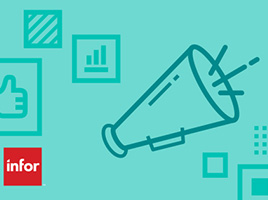Enterprise Resource Planning software is the equivalent of an engine for the digital machinery of a large business. It’s intuitive enough, a business can make more sense of its data (and hence make better business decisions, every moment) if its ERP software is highly empowering. That, however, is a gross oversimplification of matters.
A Forrester study shows that 50 percent of ERP customers are two or three releases behind the latest version of the software they’re currently using. Then, the last five years have brought in such significant innovation in the world of ERPs, that you could well be stuck with a giant outdated software even if you purchased it, let’s say, four years back, and never did a full-blown upgrade. This could be silently killing your business, slowly but surely, and every single day.
In this guide, we will show you exactly why and how.

Version Locking: Death for the ERP Software – Business Relationship
Customizations are a part and parcel of using ERPs for business management. However, not all old-school ERPs were truly meant for deep customizations, even though they allowed the alterations at a technical level. Even a small number of such deep customizations, which might have seemed relevant at the time of their execution a few years back, could make the ERP highly inflexible on the whole. This is called version locking. Making any changes becomes increasingly difficult because of the real challenges posed in terms of disrupting customer system interfaces, workflows, and reports. The net result; even though your business operations may have changed, the ERP software won’t lend itself easily to further customizations to support the business processes.
When Old ERP Software Impedes Business Velocity
True globalization is now on the agenda of every business big or small. The penetration of the Internet has made it absolutely necessary for businesses to operate on a global scale. Sadly, many old-school ERPs are not attuned to the idea of rapid expansion of business to other countries.
These ERPs, hence, significantly slow down the expansion activities of businesses. This is particularly true for several companies that are stuck with basic on-premises ERP software, which was designed more for country-by-country growth (rollouts) rather than big bang globalization.
Modern ERPs work differently. They let businesses focus on expansion, with the hope that they would be able to lay down the application footprint for a new geography within weeks (not months or years). Also, they eliminate the need for hefty IT infrastructure linked capital expenses by leveraging the cloud architecture.
A Blow to the Mobility Dreams of Modern Businesses
Mobility is the name of the game, today. Not only are businesses increasingly finding themselves more and more in love with the idea of mobile technologies, but also the modern millennial-heavy workforce demands mobility for effective and productive work. When a company’s ERP software poses a roadblock on this journey towards complete mobility, spirits falter, and the results are bad. A mobile-ready ERP, on the other hand, brings the power of flexibility and systems/data visibility on the move, highly empowering business operations.
Consider this: Nobody could have predicted the onset of the mobile-loving, anywhere and anytime connectivity era that businesses exist in today when the old school ERPs of the PC era were in demand. When you choose to remains stuck with an ERP from that era, you’re saying yes to the idea of recurring bouts of temporary blindness to your business. Competitors who’re using cloud powered and new age mobility ready ERPs are inching towards you and will soon supplant you in the market, should this continue.
The IT Budget Allocation Conundrum
Various Gartner and Forrester report suggest that the cost of an Oracle or SAP deployment could be anything between $12 million and $17 million. This excludes maintenance fees, infrastructure upgrades, system integrations, and recurring IT maintenance. It should be clear how all this can quickly consume IT budgets. The result; companies have to allocate something like 50 percent to 90 percent of the budget toward support, rather than innovation via ERP. There are opportunity costs all along the way (money that is actually spent in system maintenance than deriving business-value out of it via more integrations, reports, etc.).
The real problems stem from the pace at which your competitors are reversing the trend, allocating as much as 90 percent of their IT budget toward value-adding ERP upgrades and integrations. This is possible because of cloud computing-based modern ERP software, where IT maintenance costs are known to go down by at least 50 percent for most businesses. Make the choice, the ease of continuing with an outdated ERP could be costing you a competitive advantage.
Outdated ERPs Can’t Keep Pace With the Changing Regulatory Environment
What do you think, was SAP R/3, one of the most preferred ERP software by business, for instance, from 2005, made with the foresight of predicting possible changes in accounting principles and revenue recognition rules? No. Is it a fair assumption that business regulations will keep on evolving? Yes. There you have a mismatch.
Companies tend to fill the chasm between their ERP’s capabilities and the demands of the real business environment via spreadsheets and people. Didn’t you purchase that ERP with the promise that this precise gap would be, one day, automated? What happened to that dream?
Upgrades to on-premises ERPs are rare; there’s no way they can reflect the operating environment of businesses. Cloud-powered ERPs differ in principle here. The architecture is such that it inherently supports the idea of change. Imagine the convenience of sleeping over an upgrade, as the cloud ERP vendor automatically pushes it into your systems, and making your ERP ready to reflect the new business reality. You save time, you save money, and you get to focus on strategy instead of operations.
Is Your ERP Software Failing You?
Fluidity. Agility. Mobility. These are the operative words for competitive businesses of this age. ERP software is a core component of the basic support framework that technology provides to a business. Question yourself; is it safe to let your castle rest on a foundation whose walls are left brittle with time?





